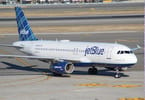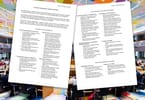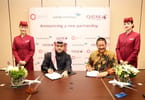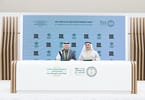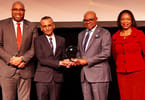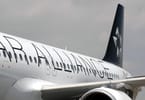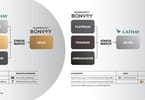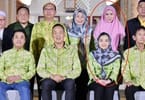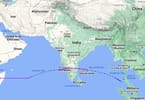SEOUL — South Korea, a country low on the list of places to see for most world travelers, is experiencing a surprise tourist boom, as the global economic crisis turns it into a shopper’s paradise.
The number of tourists to South Korea surged 6.9% last year, more than any other Asian destination, as a weakening in the value of the Korean won made it much cheaper to shop in the country.
The boom is led by tourists from Japan, where the appreciation of the Japanese yen has magnified the effect of the drop in the won. The number of Japanese tourists surged 52% in December and 55% in January, according to the Korea Tourism Organization, the national agency for tourism promotion. Those tourists are filling hotels at a time when business travel is on the decline.
Miki Usui, a 27-year-old company receptionist in Japan, recently spent 130,000 yen (about $1,300), during three days of shopping in downtown Seoul. That amount converted to two million Korean won, compared with 1.18 million won a year ago.
“It’s really cheap,” says Ms. Usui, whose purchases included a Loewe handbag and lots of cosmetics. “I didn’t even tell my friends that I was coming to Seoul because I know they would ask me to buy a lot for them.”
The tide of visitors is so large that airlines in both South Korea and Japan have added flights between the countries. And retailers in big cities like Seoul and Busan have hired Japanese-speaking workers and put up advertising signs written in Japanese.
Japanese tour agencies offer new tours to South Korea, with some built entirely around shopping. One takes tourists to a duty-free shop soon after they arrive in Seoul. Even South Korea’s national tourism agency is getting in on the act with a campaign in Japan carrying the slogan, “Visit Korea Now — Double Your Joy at Half the Cost.”
The South Korean won gained the most strength of any major currency against the U.S. dollar from 2005 to 2007. But its value plunged last year as foreign investors sold holdings in the South Korean stock market to cover losses elsewhere, reducing demand for the won. It now takes about 1,400 won to buy $1 U.S. dollar, far more than the 906 won needed at its peak value in early November 2007.
The fall has been just as pronounced against Asian currencies closely aligned with the dollar, such as those in Hong Kong, Singapore and China, leading to bumps in visitors from those places. The number of tourists from China jumped 15% in January.
The tourist boom isn’t enough to overcome bigger troubles in South Korea’s economy, which is heavily dependent on export manufacturing. But it has narrowed the usual gap between the Koreans who leave the country compared with visitors who come to it. In January, the number of visiting tourists increased 25.3% to 607,659, while the number of Koreans leaving for trips fell 38.6% to 812,901, the tourism organization said.
The number of Koreans visiting Japan fell 52% in January, the biggest drop since 1991.
Kumiko Ito waited a month to book a South Korea tour with Japan’s largest tour operator, JTB Corp. After shopping in the Myeong-dong area of downtown Seoul, the 42-year-old took a rest in a hotel lobby before going to a duty-free shop. “I shopped through the night until 5 a.m. and woke up at 8 a.m. to shop again,” she said, carrying a long shopping list that mostly included cosmetics.
Myeong-dong is a key stop for tourists, home to the flagship stores of the ritzy Lotte and Shinsegae department-store chains, and hundreds of smaller stores.
TheFaceShop, a local cosmetics chain, reported selling about 55 million won of goods a day in its 890-square-foot Myeong-dong shop alone, a 120% increase over a year ago. Japanese tourists spent about nine billion won at the Lotte department stores in January, 11 times as much as they spent at the store a year ago. “If the number of tourists, particularly Japanese, drops, it will be a big hit to the company,” said Song Jee-young, a spokeswoman at the adjacent Lotte Hotel, where occupancy has been about 90% during the winter months, a period when the hotel is usually only about 65% full.
One result of the increased activity has been short supplies, particularly of luxury women’s goods. Duty-free shops in downtown Seoul one recent weekend were out of stock of the cylindrical-shaped Louis Vuitton Monogram Canvas Papillon 30 bag, which costs 1.4 million won, about 15% cheaper than buying it in Japan. A spokeswoman for Louis Vuitton Korea said it delivers new supplies weekly.
In February, the Korea Tourism Organization invited leaders of Japan’s seven largest tour agencies to a three-day meeting to create new tours to encourage second and third visits later in the year. One destination: a museum of Son Sung-mok, who owns one of the world’s largest collections of phonographs, in the rural town of Gangneung.
Akihiro Hosono, general manager of a JTB tour agency branch, said he would consider Mr. Son’s venue as a potential tour for Japanese schoolchildren. Diversifying destinations in South Korea would help maintain interest in Korea when the currency gap eventually ends, Mr. Hosono said.
WHAT TO TAKE AWAY FROM THIS ARTICLE:
- After shopping in the Myeong-dong area of downtown Seoul, the 42-year-old took a rest in a hotel lobby before going to a duty-free shop.
- The boom is led by tourists from Japan, where the appreciation of the Japanese yen has magnified the effect of the drop in the won.
- South Korea, a country low on the list of places to see for most world travelers, is experiencing a surprise tourist boom, as the global economic crisis turns it into a shopper’s paradise.



